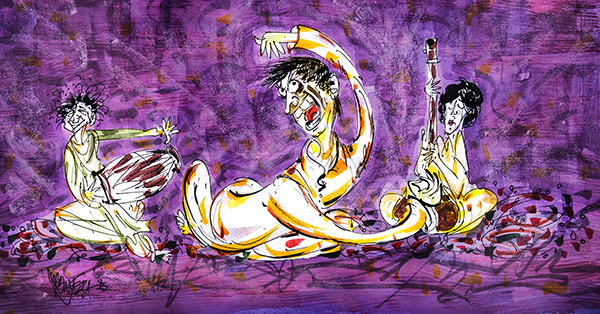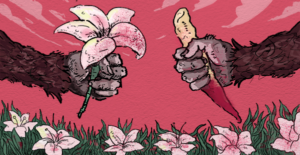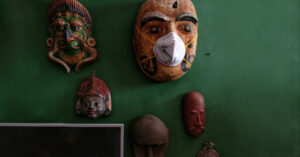A Good Laugh At Classical Musicians
I remember singing at a concert in Kolkata several years ago, where we were suddenly told, possibly at the point where we left the green room to proceed to go on stage, that the concert would be televised live on the national state-supported television network. It was too late to protest or to ask why we had not been consulted earlier. In addition, the concert was at a prestigious venue, organized by a revered organization, and in the memory of a lady of absolutely indisputable stature and divinity. We gave in, and just about managed to send a quick text message home to tell our respective families that they could watch the performance live if they wished to.
Surprisingly, once the performance was over, none of us received a single message or call to indicate that anyone had been able to view the telecast or better still, enjoyed it.
It was only when we phoned family members that the mystery was solved.
Everyone at home was in splits about our performance, because throughout the telecast, we could be viewed– but not heard. And so, like some long, silent animated comic strip on display, we sang, played, gesticulated, smiled, marked the sam, mouthed appreciation for each other, but not a single swar, matra or word could be heard!
The telecast was truly the stuff that caricatures are made of, even though none of us gesticulate flamboyantly or have exaggerated mannerisms on stage.
Distortion and over-the-top exaggeration form an integral and accepted part of caricaturing. I thought of my ill-fated, silent telecast as I watched an ad for mustard oil on television, where popular actor Boman Irani plays a tabla player. The ad caricatures a performance of classical music and includes an actor playing a sitar player, another who plays a harmonium artiste and of course, several listeners in the audience. Each actor caricatures the frenzied mannerisms of some classical artistes as they move towards a crescendo or climactic moments in their performances. The listeners swish and nod their heads in over-exaggerated comic movements.
The truth is, the likeness to real life performers and listeners cannot be missed.
This is by no means the only ad caricaturing classical musicians. A recent ad for a fruit-flavoured lozenge features a competition between a classical vocalist and a tabla player. Both tabla player and vocalist are surrounded by their respective supporters, each hell bent on proving his supremacy over the other. Both artistes display exaggerated comic mannerisms and just when the tabla player seems close to being declared victorious, the vocalist does a photo-finish, leaving the near-victorious tabla player gaping, by sticking his tongue out from between his lips and doing a tongue raspberry!
Distortion and over-the-top exaggeration form an integral and accepted part of caricaturing. I thought of my ill-fated, silent telecast as I watched an ad for mustard oil on television, where popular actor Boman Irani plays a tabla player. The ad caricatures a performance of classical music and includes an actor playing a sitar player, another who plays a harmonium artiste and of course, several listeners in the audience. Each actor caricatures the frenzied mannerisms of some classical artistes as they move towards a crescendo or climactic moments in their performances.
In recent times, more so in the last two years, festivals of music have either gone online or adopted a hybrid model of offline and live streaming formats. It has therefore become possible to view many performances and entire music festivals online, both as they are streamed live or then on YouTube, where the streams are stored for viewing. Caricaturists are bound to find ample fodder in these videos for many more caricature acts and ads featuring classical music. Last year, a prestigious music festival featured a dhrupad recital by an artiste who took to the stage with a pakhawaj player for accompaniment, as is conventionally done, but also with an army of students lined up behind him, all clad in co-ordinated colours. Shortly into the performance the featured artiste went into spasmodic, convulsive movements, flailing his arms wildly, and even pulling at a make believe top-knot on his head as he reeled off what seemed to be an attempt at presenting intricate layakari at top speed. This is truly a gold mine of a performance that is certain to be mined by caricaturists sooner than later.
Fortunately for the caricaturists, and for society in general, we still retain a sense of humour when it comes to these spoofs on the often blindingly garish attire, mannerisms and antics of classical musicians. But the day may not be far when someone’s sentiments may be hurt and a controversy created over the irreverence shown to our hallowed classical traditions. Till then, I guess we can choose to either ignore the spoofs or dismiss them as being frivolous and silly, or just sit back and have a good laugh at ourselves!
Illustration by Suvamoy Mitra





